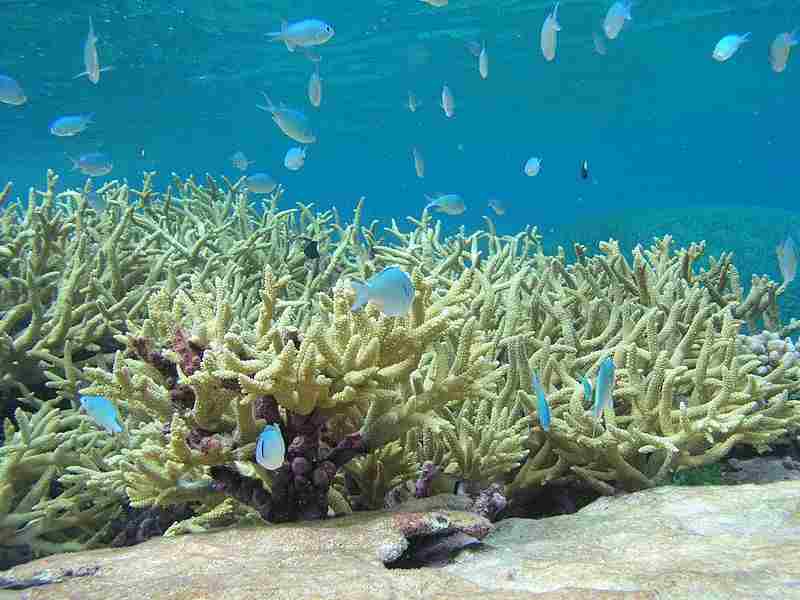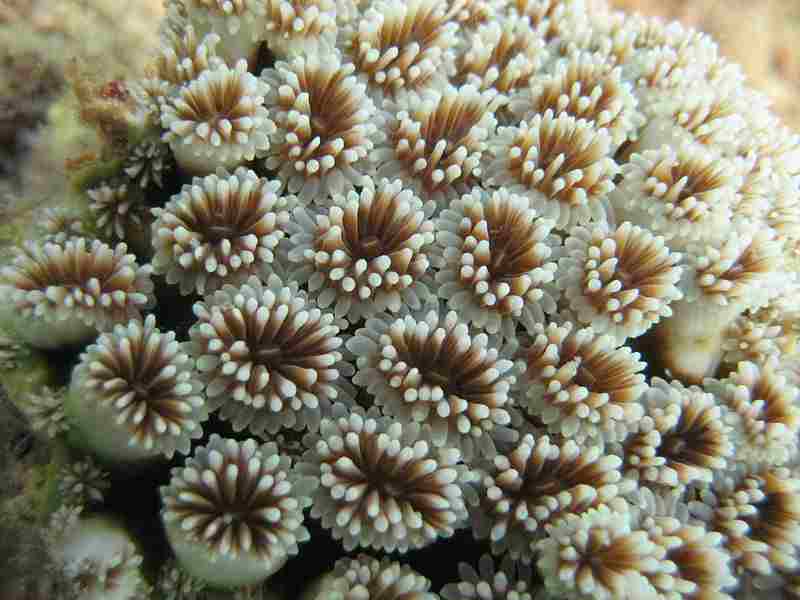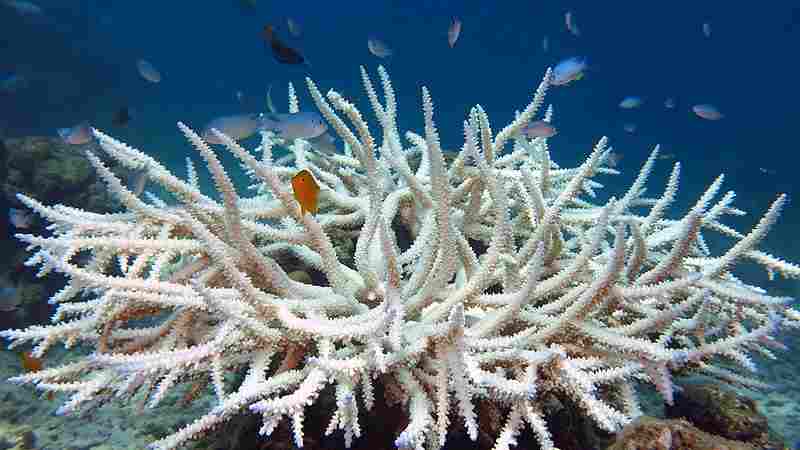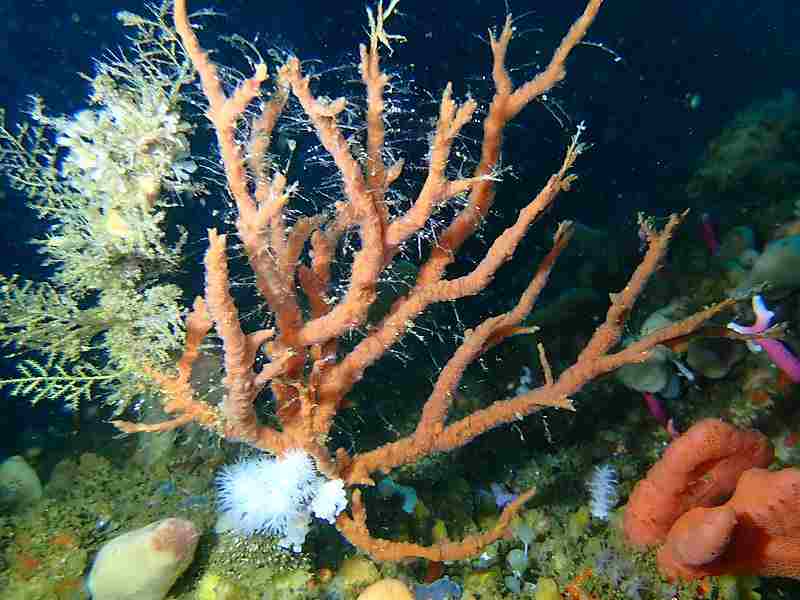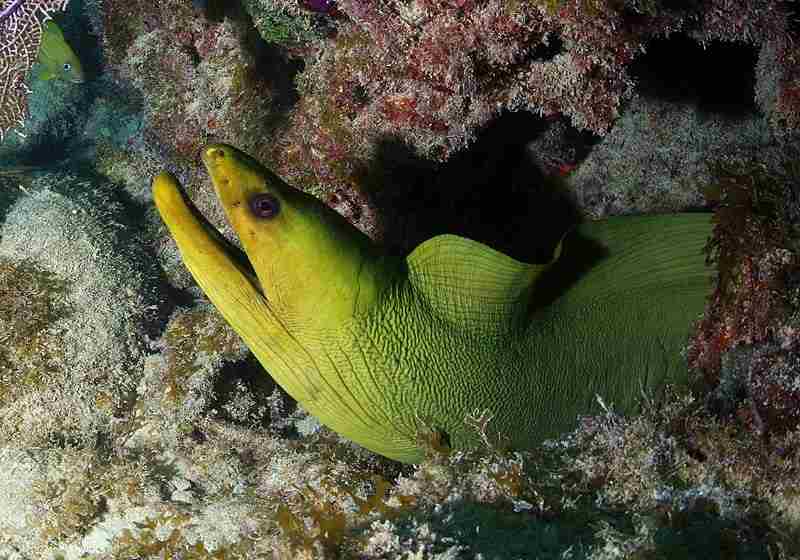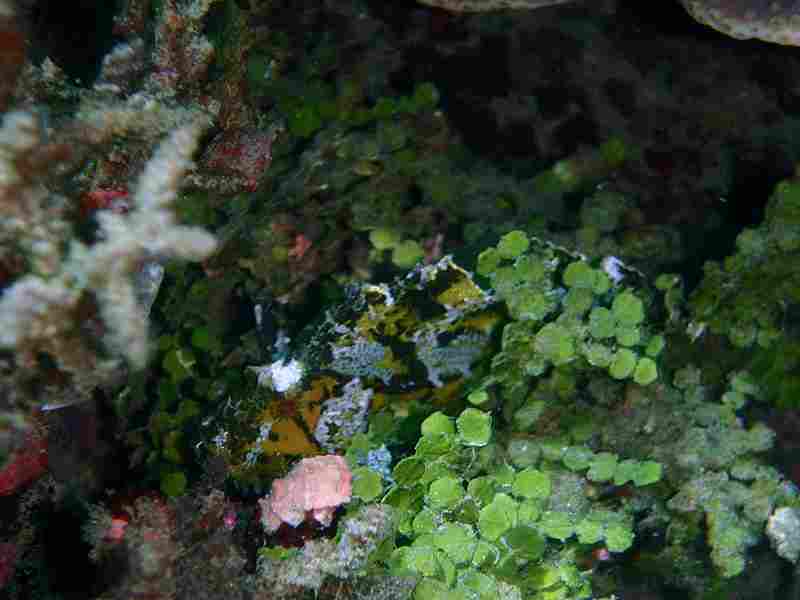11 Impacts of Coral Bleaching Discussed
Impacts of coral bleaching are; loss of fish populations, increased flooding risk, marine biodiversity reduction, reduced coastal ecosystem resilience; economic losses, and reduction of blue carbon sequestration rates.
Coral bleaching affects humans through; loss of fishery resources, decline in tourism benefits; job losses, loss of scientific knowledge, and depletion of coral-derived raw materials.
This article discusses the impacts on coral bleaching and their effects on humans, as follows;
What are The Impacts of Coral Bleaching?
Impacts of coral bleaching are; loss of (reef) fish populations, increased risk of coastal flooding, marine biodiversity reduction, reduced resilience of coastal ecosystems, economic losses, and reduction of blue carbon sequestration rates.
1). Loss of Fish Populations: One of the Impacts of Coral Bleaching
Coral bleaching can have a significant impact on coral reef ecosystems, which, in turn, can lead to the loss of coastal fish populations. This section addresses how coral bleaching contributes to the phenomenon of fish population decline.
How Coral Bleaching Affects Fish Populations
The mechanisms by which coral bleaching reduces the size of fish populations include; habitat degradation, decreased food availability, disruption of trophic interactions, loss of nursery areas, reduced coral-associated species, altered migration patterns, and increased ecological stress.
Coral reefs serve as important habitats for a notable variety of fish species. When corals bleach and subsequently die, the complex three-dimensional, biogenic structure which they provide is lost. This structure offers shelter, protection, as well as breeding grounds for several fish species. With the degradation of this habitat, fish populations lose their homes and essential spaces for foraging and reproduction.
Healthy coral reefs have high species richness and biodiversity, which support a diverse and abundant food web. When corals bleach and die, this biodiversity diminishes, leading to reduced food availability for many fish species. As a result, fish populations may suffer from decreased food resources, affecting their rate of growth and survival.

Coral reefs are characterized by intricate trophic interactions, where various species of fish contribute to energy transfer processes in the reef food chain. When coral bleaching disrupts the balance of the reef ecosystem, it can lead to the displacement or population decline of certain fish species, which can, in turn, affect other species that rely on them for food.
For many juvenile fish, coral reefs often serve as nursery areas. These young fish find protection as well as abundant food sources within the complex structures of healthy reef systems. Coral bleaching reduces the availability of suitable nursery habitats, which can lead to decreased survival rates for dependent juvenile organisms.
Many fish species have co-evolved with specific coral species and rely on them for resources like food and shelter. Coral bleaching can lead to the decline or loss of these coral species, which can directly affect the fish species that depend on them.
As fish populations are forced to adapt to changing conditions caused by coral bleaching, they may alter their migration patterns and/or move to new areas in search of more favorable conditions. These shifts can lead to changes in the distribution and spatial abundance of fish populations, thereby affecting local ecosystems and fisheries.
Coral bleaching events often coincide with elevated sea temperatures, which can stress fish populations directly. High water temperatures can affect fish physiology, making them more vulnerable to disease, and reducing their overall vitality and reproductive success.
The discussion so far has shown that coral bleaching has far-reaching consequences for coral reef ecosystems, including the loss of fish populations. The degradation of coral habitats, reduced food availability, disrupted trophic interactions, and the loss of critical nursery areas all contribute to the decline of fish populations in areas affected by coral bleaching. Conservation efforts to address coral health and protect these ecosystems are important for the well-being of fish and the overall resilience of coral reef environments.
2). Increased Flooding Risk
Coral bleaching can indirectly contribute to increased flooding risk in coastal areas. While coral bleaching itself cannot be described as a cause flooding, its impacts on coral reefs and associated ecosystems can set in motion a chain of events that heightens the vulnerability of coastal regions to flooding hazards. Below is an elaboration of points that show how coral bleaching can lead to an increased flooding risk.
Link Between Coral Bleaching and Flooding Risk in Coastal Areas
Some factors and effects which link coral bleaching to flooding and its risks within coastal areas include; loss of coastal protection, erosion and sedimentation, weakened shoreline resilience, loss of biodiversity, disrupted fish communities, reduced economic resources, loss of resilience to climate change, and lower adaptive capacity.
Healthy coral reefs may function as natural barriers that help to dissipate wave energy and protect coastal communities from the impacts of storms, including storm surges and flooding. When corals bleach and die, the three-dimensional structure of the reef degrades, thereby reducing its ability to break waves and protect the coastline.
Coral reefs help to stabilize the sea bottom by binding sediment and preventing/mitigating erosion. When coral reefs deteriorate due to bleaching, they lose this protective function. Eroded sediments are more likely to be transported to coastal areas, where they contribute to sedimentation, siltation, and increased flood risk.
Often, coral bleaching coincides with other stressors such as ocean pollution and acidification. These combined stressors can weaken the resilience of coastal ecosystems, making them less capable of coping with rising sea levels and increased flooding that are resultant of extreme weather events.
As already stated before, coral reefs are hubs of biodiversity, supporting a wide variety of species, including those that are involved in regulating local ecosystems. When corals bleach and die, the entire ecosystem can experience a loss of biodiversity, impacting the productivity and sustainability of the coastal environment.
Coral reefs serve as important fish habitats. Bleaching can disrupt fish communities and lead to declines in herbivorous fish, which are crucial in controlling algae that can overgrow and suffocate corals. Algal overgrowth can exacerbate the overall degradation of the reef ecosystem and its ability to provide natural coastal ecosystem services/protection.
For coastal communities, coral reefs are significant sources of income and livelihoods through activities like tourism and fishing. Coral bleaching-related declines in these sectors can weaken the economic resources available for investing in flood protection infrastructure.
Also, coral bleaching is often linked to rising sea temperatures, which represent a consequence of climate change. As coral reefs suffer, the overall resilience of coastal areas to climate-related flooding decreases. The combination of bleaching, rising sea levels, and extreme weather events intensifies the flooding risk.
Lastly, communities that depend on coral reefs may find it challenging to adapt to increased flooding risks and the loss of protective services provided by the reefs. This can result in vulnerabilities to flooding events and difficulties in disaster preparedness and response.
While coral bleaching itself does not directly cause flooding, its impacts can weaken the natural defenses and resilience of coastal regions. This, combined with other factors such as climate change and sea level rise, increases the risk of flooding in these vulnerable areas. Efforts to improve coral health, reduce greenhouse gas emissions, and implement coastal management strategies are all helpful for mitigating these risks and protecting coastal communities.
3). Marine Biodiversity Reduction: One of the Impacts of Coral Bleaching
Coral bleaching has significant repercussions for marine biodiversity, and often leads to a reduction in the diversity and abundance of species in affected coral reef ecosystems. This section discusses how coral bleaching contributes to the reduction of marine biodiversity.
Role of Coral Bleaching in Marine Biodiversity Reduction
The role of coral bleaching in loss of marine biodiversity can be broken down into various conceptual segments such as; coral species' decline, environmental degradation, changes in fish communities, decreased food availability, altered microhabitats, impact on coral-associated species, species displacement, and increased vulnerability to disease. These are elaborated as follows;
Coral reefs are highly diverse ecosystems, which host a multitude of marine organisms. Coral bleaching events can result in the death of various coral species. When these corals die, the physical structures that provide habitat for countless marine species resultantly deteriorate, reducing the availability of suitable living spaces.
Healthy corals serve as essential habitats for various species, including fish, aquatic invertebrates, and microorganisms. When coral polyps expel their symbiotic algae and turn white during bleaching, the complex eco-engineered structures and the microenvironments they create become less favorable for supporting diverse marine life.
As discussed earlier, coral reefs are home to a wide variety of fish species, each with its own ecological niche and role in the reef ecosystem. When corals bleach and die, the fish communities can experience shifts and declines in population. This can disrupt trophic interactions and affect the overall balance and functioning of the ecosystem.
Healthy coral reefs provide a multitude of food sources for marine organisms, which include zooplankton, invertebrates, and smaller fish. As coral bleaching impacts the overall health of the reef, the availability of food sources decreases, affecting those species higher up in the food chain.
Several marine species rely on the nooks and crannies of coral structures as their microhabitats, which offer protection from predators and serve as breeding grounds. Others, like eels, utilize these same spaces as hideouts for effective ambush-based predation. As corals bleach and lose structural complexity, these microhabitats are compromised, reducing the availability of suitable niches for certain species.

Some marine organisms have symbiotic or specialized relationships with specific coral species. When those corals bleach, the associated species may lose their source of sustenance, affecting their survival and long-term abundance.
Also, some marine species may migrate or move to other areas when their habitat becomes unsuitable due to coral bleaching. This can lead to localized overpopulation or excessive competition in new areas, potentially causing imbalances in those ecosystems.
Coral reefs are biodiversity hotspots, so that when they experience coral bleaching, the decline in species diversity can be particularly severe. The loss of specialized and unique species can have notable ecological consequences.
Lastly, coral bleaching can make corals more susceptible to disease, leading to higher mortality rates. Diseases can also affect the marine species that depend on healthy corals for their survival.
The issues discussed imply that coral bleaching can significantly reduce marine biodiversity by affecting the health and structural integrity of coral reefs, disrupting the ecological balance of these ecosystems, and diminishing the availability of food and shelter for countless species. Efforts to address climate change, reduce local stressors, and implement conservation measures are essential for mitigating the impacts of coral bleaching on marine biodiversity.
4). Reduced Coastal Ecosystem Resilience
Coral bleaching can lead to reduced resilience in coastal ecosystems, especially within coral reef environments. Resilience refers to the ability of an ecosystem to withstand and recover from disturbances. The following subsection overviews how coral bleaching contributes to reduced coastal ecosystem resilience.
How Coral Bleaching Contributes to Reduced Ecosystem Resilience
Factors that indicate the negative effect of coral bleaching on ecosystem resilience are; degraded coral health, loss of habitat complexity, disruption of trophic relationships, increased vulnerability to disease, lower resistance to climate change, reduced erosion control, loss of carbon sequestration efficiency, impaired recovery potential, and altered species composition.
Coral bleaching events result from various environmental stressors, the most prominent one being elevated sea temperatures. When corals bleach, they expel their symbiotic algae and lose their vibrant colors. Prolonged bleaching can lead to coral mortality. As corals are the foundational species in reef ecosystems, their decline weakens the ecosystem's overall productivity and resilience.
Healthy coral reefs are three-dimensional mazes of nooks, crannies, and crevices. These complex structures provide refuge, breeding grounds, and suitable foraging sites for a multitude of marine species. When corals bleach and die, the intricate habitat complexity is lost, which reduces the capacity of the ecosystem to support such diverse species.
Coral habitats are characterized by intricate trophic relationships in which various species have specific ecological functions in the reef food web. Coral bleaching can disrupt these relationships, leading to changes in the abundance, vitality and distribution of organisms. This disruption can lead to loss of stability within the ecosystem.
As remarked earlier, bleached corals are more susceptible to diseases, which can spread and cause additional coral mortality. Diseases can affect not only corals but also other species within the ecosystem that depend on healthy corals for shelter and sustenance.
Coral bleaching events are mostly linked to elevated sea temperatures, a consequence of climate change and global warming. As bleaching weakens coral reefs, it makes them less resilient to future warming events. This can create a deteriorating trend where recurrent bleaching events further erode the reef's ability to withstand environmental stress.
As rigid structures, coral reefs are instrumental in protecting coastlines from erosion and stormwater surges. Their complex structure and growth help to dissipate wave energy, preventing severe coastal erosion. As corals bleach and deteriorate, their capacity to provide this vital service diminishes, making coastlines more vulnerable to both erosion and flooding.
Healthy coral reefs contribute to carbon sequestration by incorporating carbon dioxide into their calcium carbonate skeletons. When coral bleaching and mortality occur, this carbon sequestration function is impaired, reducing the reef's capacity to mitigate climate change.
If coral bleaching events occur too frequently, coral populations may not have sufficient time to recover. This can lead to a state of progressive degradation, making the ecosystem less able to bounce back from future disturbances.
The loss of sensitive species due to coral bleaching can result in the dominance of resilient or opportunistic species. Such changes in species composition may reduce the overall diversity and resilience of the ecosystem.
5). Economic Losses: One of the Impacts of Coral Bleaching
Coral bleaching can be linked to significant economic losses, especially in regions that rely on healthy coral reefs for their economic well-being. These losses can manifest in various ways, some of which are highlighted here.
Ways in Which Coral Bleaching Causes Economic Losses
The link between coral bleaching an economic loss(es) is defined by impacts on tourism, decline in fishery productivity, loss of livelihoods, increased coastal erosion, impact on seafood industry, loss of biodiversity-based industries, decreased property values, reduced carbon sequestration, increased management costs, and long-term sustainability concerns.
For tourists, coral reefs are major attractions. Bleached and degraded coral reefs are less appealing within this context, and can result in reduced tourist numbers and decreased revenue for businesses dependent on tourism, such as dive operators, hotels, and restaurants. Destinations that experience coral bleaching often suffer from reputational damage, which can have long-term economic consequences.
Coral reefs support fisheries by providing a habitable environment for numerous fish species. When coral bleaching affects these reefs, fish populations may reduce due to habitat degradation and food source limitations. This can lead to declines in catches and income for local fishing communities.
Several coastal communities depend on the income generated from fishing and tourism related to coral reefs. Coral bleaching can directly impact the livelihoods of these communities by reducing fishing opportunities and tourism-related income, resulting in economic hardships and reduced standards of living.
Healthy coral reefs can be very effective in protecting coastlines from erosion and storm damage. Coral bleaching weakens this protective function, leading to increased coastal erosion. This, in turn, necessitates investments in shoreline protection measures, which can be economically demanding for governments and local communities.
Coral bleaching can affect the seafood industry beyond just fisheries. It can disrupt the availability of popular seafood species, affecting the supply chain and driving up seafood prices. This can impact restaurants, seafood markets, and consumers.
Asides fish, coral reefs are home to various, valuable marine species, including those harvested for the aquarium trade, ornamental trade, and pharmaceutical research. The decline in biodiversity due to coral bleaching can impact these industries and result in financial losses.
Coastal property values may be affected by the decline in the aesthetics and recreational opportunities associated with healthy coral reefs. Properties in areas with bleached and degraded reefs can experience decreased demand and lower resale values.
Healthy coral reefs sequester carbon dioxide from the atmosphere, which can have economic value in carbon trading markets. When coral bleaching hinders this carbon sequestration function, the economic benefits from such processes may be reduced, being replaced by high remediation costs and carbon taxes.
Governments and conservation organizations may need to allocate more resources to address the consequences of coral bleaching, including reef restoration efforts, monitoring, and protection measures. These additional costs can strain budgets and reduce the availability of funds for other essential services.
The economic losses resulting from coral bleaching are not one-time events. If coral reefs continue to degrade, the long-term sustainability of industries dependent on these ecosystems can be in jeopardy.
Generally, coral bleaching can lead to a range of economic losses, impacting tourism, fisheries, livelihoods, property values, and various industries. Addressing the root causes of coral bleaching, such as climate change and various local stressors, is essential to mitigate these economic impacts and secure the long-term economic sustainability of coastal communities and industries.
6). Reduction of Blue Carbon Sequestration Rates
Issues raised in other sections of this article, have already shown that coral bleaching can lead to a reduction in blue carbon sequestration rates, particularly in coral reef ecosystems. Blue carbon refers to the carbon captured and stored by marine and coastal ecosystems, including coral reefs.
Below is an overview of how coral bleaching contributes to the reduction of blue carbon sequestration rates.
Reduction of Blue Carbon Sequestration Rates Due to Coral Bleaching
The reduction of blue carbon sequestration rates in oceans due to coral bleaching, can be analyzed in terms of coral mortality, reduced growth, loss of biodiversity, algal overgrowth, decreased reef health, increased carbon release, impaired resilience, and lower efficiency of carbon capture.
Coral bleaching events often result in the mortality of corals when stressors, such as elevated water temperatures, persist. Dead corals no longer contribute to the sequestration of carbon through the formation of calcium carbonate skeletons. These skeletons are a primary form of blue carbon storage in coral reefs.
Even if corals survive a bleaching event, their growth may be significantly impaired due to stress. Slower coral growth means less carbon is incorporated into their skeletal structures, which reduces the rate at which blue carbon is sequestered.
Coral bleaching can have cascading effects on the diversity and abundance of species within coral reef ecosystems. Some species, such as crustose coralline algae, seagrasses, and mangroves, are involved in blue carbon sequestration. The disruption of these species due to coral bleaching can reduce their capacity to capture and store carbon.
As corals weaken or die from bleaching, they become susceptible to algal overgrowth. Algae do not sequester carbon as efficiently as corals or other blue carbon organisms. The proliferation of algae on degraded reefs can therefore lead to a net loss of blue carbon storage capacity.
Coral bleaching can have broader effects on the overall health of coral reef ecosystems. Weakened reefs may experience shifts in species composition, with some groups which are less efficient at carbon sequestration dominating over those more proficient in carbon storage.
When corals bleach and die, they release stored carbon from their skeletal structures and organic matter. This carbon can re-enter the atmosphere as carbon dioxide, contributing to greenhouse gas emissions and exacerbating climate change.
Repeated or severe coral bleaching events can weaken the resilience of coral reefs to other stressors, such as ocean acidification and further temperature increases. Reduced resilience may result in ongoing carbon losses from degraded reefs.
Generally, coral reefs are highly efficient at capturing and storing carbon compared to other marine ecosystems. The degradation of coral reefs due to bleaching events can result in less efficient carbon capture, reducing their blue carbon sequestration potential.
The points addressed show that coral bleaching leads to a reduction in blue carbon sequestration rates primarily through the mortality and reduced growth of corals, as well as the disruption of other blue carbon-related species within the coral reef ecosystem.
This has implications for the capacity of coral reefs to act as carbon sinks, contributing to global carbon balance and climate regulation. Efforts to address the root causes of coral bleaching are very important to preserve blue carbon sequestration in these vital ecosystems.
How Does Coral Bleaching Affect Humans?
Coral bleaching affects humans through; loss of fishery resources, decline in tourism benefits, job losses, loss of scientific knowledge, and depletion of coral-derived materials.
1). Loss of Fishery Resources: One of the Ways Coral Bleaching Affects Humans
Coral bleaching can have significant and direct impacts on human communities, particularly in regions where fisheries are a crucial source of food and income. The loss of fishery resources due to coral bleaching can affect humans in several ways, some of which are highlighted within the context of fishery deterioration.
How Coral Bleaching Affects Fisheries
Coral bleaching have varying repercussions for fisheries and the humans that depend on them, which may be observed in the form of; reduced fish catch, decline in fishery income, food insecurity risks, increased fishing pressure, health risks, economic vulnerability, cultural and social impacts, potential for conflict, migration and relocation, as well as resource management challenges.
Coral reefs provide essential habitats for numerous fish species. When coral bleaching occurs, the degradation of these habitats can result in reduced fish populations. This leads to decreased fish catches for local communities and commercial fisheries, affecting their food security and economic well-being.
Fishermen and women who depend on healthy coral reefs may experience a decline in their income. The reduced availability of fish can lead to lower profits and economic hardships for those engaged in fishing activities.

In many coastal communities, particularly in developing countries, fish from coral reefs represent a significant portion of the local diet. A reduction in fishery resources due to coral bleaching can directly impact food security, leading to a lack of protein and essential nutrients in people's diets.
In response to the decline in fish populations caused by coral bleaching, fishing communities may intensify their fishing efforts to compensate for the reduced catch. This can lead to unfavorable practices like overfishing, which depletes fish stocks further and jeopardizes long-term sustainability.
When fishery resources decline, communities may turn to alternative, less nutritious sources of food. This can have negative health implications, particularly for vulnerable populations like children and pregnant women.
Communities heavily reliant on coral reef fisheries may become economically vulnerable when their primary source of income is disrupted by coral bleaching. This vulnerability can be exacerbated by a lack of alternative livelihood opportunities.
Coral reefs and fishing activities are often deeply intertwined with the cultural and social fabric of coastal communities. The loss of fishery resources can disrupt traditional practices, weaken social cohesion, and impact cultural identities.
Competition for diminishing fishery resources can lead to conflicts among fishing communities, exacerbating tensions and disputes over access to fishing grounds.
In extreme cases, the loss of fishery resources due to coral bleaching may force communities to consider migration or relocation, as their traditional livelihoods become untenable. This can lead to dislocation and social upheaval.
Local and national authorities may face challenges in managing fishery resources in the wake of coral bleaching events. Effective management and conservation measures may be needed to help fish stocks recover.
These discussions show that the loss of fishery resources due to coral bleaching can have far-reaching consequences for human communities, affecting their food security, income, health, culture, and overall well-being. Climate change mitigation, sustainable fishing practices, and the protection and restoration of coral reefs are essential steps in addressing these challenges and ensuring the long-term resilience of coastal communities.
2). Decline in Tourism Benefits
Coral bleaching can lead to a decline in tourism benefits, affecting human communities in regions that depend on coral reef-based tourism for their livelihoods and economic productivity. Here is a discussion of how humans experience this decline;
How Humans are Economically Affected by Coral Bleaching-Induced Decline in Tourism Profitability
Impacts on the tourism sector (and related industries) in coastal areas, as a rest of coral bleaching include; reduced tourist numbers, economic losses, reputational damage, diversification challenges, impacts on local communities, job losses, impact on conservation efforts, shifts in tourist preferences, cultural and social impacts, and government revenue loss.
Coral reefs are major attractions for divers, snorkelers, and nature enthusiasts. When coral bleaching events lead to the degradation of these ecosystems, tourists may be deterred from visiting, resulting in reduced tourist numbers.
A decrease in tourist numbers directly translates to economic losses for businesses that depend on tourism, such as dive operators, coastal hotels, restaurants, and tour guide services. Smaller incomes and decreased revenues can lead to financial hardship for these businesses and the individuals employed in the tourism sector.
Destinations affected by coral bleaching may also suffer from reputational damage, as tourists share their negative experiences or concerns about the state of the reefs. This can lead to a long-lasting decrease in tourist interest in the area, affecting future bookings.
Communities that have heavily relied on tourism may face challenges when attempting to diversify their income sources. The sudden decline in tourism benefits can result in economic vulnerabilities, especially in regions with limited alternative livelihood opportunities.
Beyond businesses, coral reef-based tourism benefits often support local communities. These communities may experience financial hardships, making it difficult to meet basic needs, including housing, education, and healthcare.
The decline in tourism can lead to job losses in the sector, affecting individuals employed as dive instructors, boat operators, hotel staff, and more. Job insecurity and income reduction can create notable social and economic problems.
Coral reef-based tourism can support conservation efforts and reef protection through revenue generated from tourism activities. A decline in tourism benefits may result in less funding available for conservation initiatives.
Tourists may shift their preferences toward destinations with healthier coral reefs, impacting not only the affected region but also boosting the economies of competing destinations.
Tourism often plays a significant role in the culture and social fabric of many coastal communities. A decline in tourism benefits can disrupt traditional practices, weaken social cohesion, and impact cultural identities.
Governments in many regions rely on tourism-related taxes and fees. A decrease in tourism can lead to a reduction in government revenue, impacting the capacity to provide public services.
The economic losses from declining tourism benefits can have lasting impacts on communities and regions, potentially compromising their long-term sustainability.
Generally, the decline in tourism benefits due to coral bleaching can have severe economic and social consequences for communities and regions that rely on coral reef-based tourism. These impacts highlight the urgent need for conservation measures including; climate change mitigation, and sustainable tourism practices to protect these ecosystems along with the livelihoods which they support.
3). Job Losses: One of the Ways Coral Bleaching Affects Humans
Coral bleaching can lead to job losses, which can affect individuals and communities that rely on coral reefs and associated activities for employment. Below is a discussion of how humans experience job losses due to coral bleaching.
How Coral Bleaching Leads to Job Losses
Issues that point to the impacts of coral bleaching on humans, in the area of jobs; include loss of tourism-related employment, decline in fishing activities, temporary reef restoration jobs, and income reduction. Other related impacts are; economic vulnerability, increase in migration rate, impact on small-scale fishing, as well as several sociocultural and governmental repercussions.
Coral reefs are major attractions for tourists, particularly divers, snorkelers, and nature enthusiasts. When coral bleaching events result in the degradation of these ecosystems, tourist numbers often decline. This can lead to job losses in the tourism sector, including positions like dive instructors, boat operators, hotel and resort staff, tour guides, and restaurant workers.

Coral reefs provide critical habitats for numerous fish species. When coral bleaching affects these habitats, fish populations may decline, reducing catch sizes. This can lead to job losses for individuals involved in fishing activities, including commercial and subsistence fishermen and women.
In response to coral bleaching events, some regions invest in reef restoration and conservation efforts to rehabilitate affected reefs. This can create temporary employment opportunities for individuals involved in reef restoration projects. However, if the bleaching events continue or worsen, these jobs may not be sustainable.
Beyond the directly impacted sectors of tourism and fishing, job losses can also occur in related and downstream industries. Suppliers, transportation services, and local businesses that rely on the tourism and fishing sectors may experience reduced demand and revenue, leading to additional job losses.
For those who depend on jobs related to coral reefs, income reduction is a significant concern. A decrease in income can affect individuals and their families, impacting their ability to meet basic needs, including housing, education, healthcare, and food.
Communities heavily reliant on jobs related to coral reefs may become economically vulnerable when their primary source of income is disrupted by coral bleaching. This vulnerability can be exacerbated by a lack of alternative employment opportunities.
In extreme cases, job losses related to coral bleaching may force individuals and communities to consider migration or relocation to seek alternative employment opportunities. This can result in dislocation and social upheaval.
Within many coastal communities, small-scale, subsistence, and artisanal fishing play a crucial role in providing jobs and livelihoods. Job losses in the fishing sector can have a direct and immediate impact on these communities' economic well-being.
Job losses can have broader social and community impacts, affecting social cohesion and community dynamics. Individuals who lose their jobs may experience stress, social challenges, and a decreased quality of life.
Governments in regions reliant on coral reef-related industries may experience a reduction in tax revenues and fees associated with tourism and fishing activities. This can impact the government's capacity to provide public services.
The discussion above implies that coral bleaching can result in job losses across multiple sectors, affecting individuals and communities that depend on coral reefs for their livelihoods. Addressing the root causes of coral bleaching and implementing sustainable practices in fishing and tourism are essential steps to mitigate these job losses and promote the long-term economic resilience of affected regions.
4). Loss of Scientific Knowledge
Coral bleaching can lead to a loss of scientific knowledge in several ways, which may affect our understanding of marine ecosystems and their evolution, composition, as well as responses to environmental stressors.
How Coral Bleaching May Affect Scientific Knowledge Acquisition
Factors that reveal the effect of coral bleaching on scientific knowledge availability and acquisition, are; reduced research opportunities, impact on long-term/long-duration studies, loss of baseline data, delayed scientific assessments; impeded coral health studies, loss of biodiversity records, impact on coral genetics research, loss of ecosystem resilience insights, inhibition of climate change research, and reduced capacity to inform policy.
Physicochemical changes that accompany coral bleaching events can make it challenging for researchers to access viable study sites and collect data during and immediately after the event. This limitation can result in missed opportunities to gather critical information about the consequences, causes and possible prevention of coral bleaching.
Long-term studies and monitoring programs are essential for understanding the dynamics of coral reef ecosystems. Coral bleaching events can disrupt these studies, creating gaps in data that make it difficult to assess trends and draw accurate conclusions.
Coral bleaching can lead to the loss of baseline data that scientists use to compare with future conditions. Without this historical context, researchers may struggle to evaluate the severity and implications of bleaching events accurately.
After a coral bleaching event, it may take time for scientists to assess the damage and the recovery process. The delay in data collection and analysis can impede our ability to understand the immediate and long-term effects of bleaching.
Researchers studying coral health, resilience, and adaptation may experience difficulties of data availability and reliability, when corals are stressed and recovering from bleaching. This can affect the accuracy and comprehensiveness of studies.
Coral bleaching can result in the loss of biodiversity records as certain species of corals and associated marine life are affected or entirely disappear. This makes it challenging to track changes in species composition and distribution, even in adjacent habitats like kelp forests.
Scientists investigating coral genetics and potential adaptations to changing environmental conditions may find it challenging to gather data during and after coral bleaching events. The loss of genetic information can hinder our understanding of coral resilience.
Coral reefs are valuable ecosystems for studying ecological resilience and adaptation to environmental stressors. Coral bleaching events can disrupt these valuable insights, potentially affecting our ability to manage and protect coral reefs effectively.
Also, coral reefs are important indicators of climate change impacts, and they play a role in global climate regulation. Loss of scientific knowledge related to coral bleaching can inhibit our understanding of climate change effects on marine ecosystems.
Scientific research on coral reefs informs policies related to conservation, climate change, and marine resource management. A loss of scientific knowledge can reduce the capacity to develop evidence-based policies and strategies to address coral bleaching and related issues.
In summary, coral bleaching events can hinder scientific research and lead to a loss of valuable knowledge about the biotic and abiotic constitution of coral reef ecosystems. This underscores the importance of ongoing research efforts, monitoring programs, and conservation measures to protect these marine environments along with the knowledge they provide.
5). Depletion of Coral-Derived Raw Materials: One of the Ways Coral Bleaching Affects Humans
Coral bleaching can lead to resource depletion, with regards to coral-derived raw materials, and this can affect various human activities and industries that depend on such resources. The subsection below discusses how humans experience this depletion.
How Humans Experience Resource Depletion Through Coral Bleaching
Resources, areas and contexts that highlight the depleting potential of coral bleaching are; coral jewelry and souvenirs, coral-based crafts, aquarium trade, biomedical research, coral-based pharmaceuticals, and construction materials. Depletion of resources can have significant social, economic, and environmental impacts.
Coral has been traditionally used in the production of jewelry, ornaments, and souvenirs. Bleaching events can result in a decline in the availability of healthy coral colonies suitable for harvesting, leading to decreased supplies for these industries.
Some communities rely on crafting and selling products made from coral, such as carvings and decorations. Depletion of coral resources can undermine these livelihoods and cultural practices.
The aquarium trade relies on live corals and coral-associated species for the global pet industry. The depletion of coral resources can limit the supply of these organisms for the aquarium trade, affecting businesses and the diversity of species available to consumers.
Corals and coral-derived substances have shown promise in biomedical research for potential medical applications. Depletion of coral resources may hinder research in areas like drug development, regenerative medicine, and pharmaceuticals.
Some pharmaceuticals are derived from coral organisms, particularly soft corals. A reduction in the availability of these organisms can limit the production of coral-based pharmaceuticals, impacting healthcare and research.
In some regions, coral skeletons have been historically used as a 'sustainable' construction material. The depletion of coral resources can lead to a scarcity of this building material, affecting local construction practices and architectural traditions.
Corals and coral-derived materials are often used in art and decor, including in sculptures, furniture, and interior design. Depletion of coral resources can limit the availability of these materials, impacting artistic and creative industries.
Many coastal communities rely on the collection and sale of coral-derived raw materials as a source of income. The depletion of these resources can lead to economic hardships for these communities.
Corals have cultural and traditional significance in many societies. Depletion of coral resources can impact cultural practices, as well as the preservation of cultural heritage.
Depletion of coral-derived raw materials may exacerbate the already fragile state of coral reef ecosystems, as human activities contribute to coral degradation. This can lead to further environmental consequences, including the loss of biodiversity and reduced ecosystem services.
Efforts to mitigate the depletion of coral-derived raw materials include sustainable harvesting practices, promoting alternatives, and implementing conservation measures to protect coral reefs. These measures aim to balance human needs with the preservation of these valuable and vulnerable ecosystems.
Conclusion
Impacts of coral bleaching are;
1. Loss of Fish Populations
2. Increased Flooding Risk
3. Marine Biodiversity Reduction
4. Reduced Coastal Ecosystem Resilience
5. Economic Losses
6. Reduction of Blue Carbon Sequestration Rates
Coral bleaching affects humans through;
1. Loss of Fishery Resources
2. Decline in Tourism Benefits
3. Job Losses
4. Loss of Scientific Knowledge
5. Depletion of Coral-Derived Raw Materials
